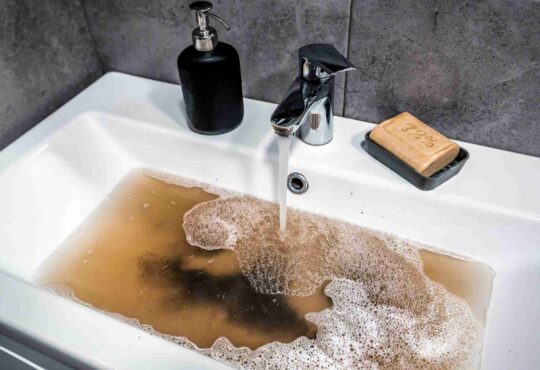
How to Clean Bathroom Sink Drain
Bathroom sinks are unsung heroes, silently whisking away the remnants of our daily grooming routines. However, over time, these hardworking drains can become clogged with hair, soap scum, and other debris, leading to slow drainage and unpleasant odors. In a time like this, knowing how to clean bathroom sink drain becomes essential.
Anatomy of a Bathroom Sink Drain
Before we delve into the cleaning process, it’s essential to familiarize ourselves with the key components of a bathroom sink drain. The primary culprits for clogs are the sink stopper, the pivot rod, and the P-trap.
Sink Stopper
This unassuming device prevents larger objects from slipping down the drain while allowing water to flow freely. However, it’s also a prime spot for hair and gunk to accumulate, potentially leading to clogs.
Pivot Rod
Attached to the sink stopper, the pivot rod is a horizontal bar that controls the stopper’s movement. Over time, debris can build up around this rod, hindering its operation and contributing to drainage issues.
P-Trap
Shaped like an inverted “U,” the P-trap is a curved section of pipe designed to catch and retain water, preventing sewer gases from entering your bathroom. Unfortunately, it’s also a prime location for clogs to form, as hair, soap scum, and other debris can accumulate in this bend.
Preparing for the Cleaning Process
Before you embark on your bathroom sink drain cleaning adventure, gather the following supplies:
- Bucket
- Rags or paper towels
- Wrenches (small and large)
- Drain snake (optional)
- Gloves
- Old toothbrush
- Baking soda
- Distilled white vinegar
- Boiling water
With your arsenal assembled, it’s time to roll up your sleeves and dive in.
Step 1: Clear the Area
Remove everything from beneath the bathroom cabinet to provide ample workspace and access to the plumbing. Lay down old rags or paper towels to catch any drips or spills, and position the bucket strategically to catch water and debris.
Step 2: Identify the Key Components
Locate the sink stopper, pivot rod, and P-trap, as these will be the primary areas of focus during the cleaning process.
Step 3: Tackle the Sink Stopper
Removing the Pivot Rod
Locate the vertical pipe beneath the sink and identify the horizontal pivot rod attached to it. Depending on your sink’s design, you may need to pinch a spring or unscrew a nut to detach the pivot rod. If it’s stubborn, enlist the help of a wrench.
Extracting the Sink Stopper
With the pivot rod removed, carefully extract the sink stopper, taking care to collect any gunk or debris that may be clinging to it.
Cleaning the Stopper and Pipe
Using your trusty toothbrush and a rag, thoroughly clean the sink stopper and the top portion of the drain pipe, removing any accumulated grime or hair. Dispose of the debris properly, ensuring it doesn’t find its way back into the drain.
Reassembling the Components
Once the sink stopper and pipe are spotless, reattach the sink stopper and pivot rod, ensuring the stopper is positioned correctly to engage with the pivot rod.
Step 4: Conquer the P-Trap
Loosening the Slip Nut Joints
Locate the two slip nut joints connecting the P-trap to the drain pipe and the wall/floor plumbing. Using your wrenches, carefully loosen these nuts to detach the P-trap.
Removing and Cleaning the P-Trap
As you remove the P-trap, be prepared for water and debris to spill out – that’s why you have the bucket! Clean the inside of the P-trap and the connecting pipes using your toothbrush and rags.
Reassembling the P-Trap
Once everything is sparkling clean, reattach the P-trap by tightening the slip nut joints. Ensure they’re snug but not overtightened to prevent leaks.
Step 5: Test and Celebrate
With the sink stopper and P-trap cleaned and reassembled, turn on the faucet and watch in awe as the water flows freely down the drain. Congratulations! You’ve successfully unclogged your bathroom sink drain.
Bonus: Natural Drain Cleaning Solutions
If you prefer a more eco-friendly approach or need an extra boost to tackle stubborn clogs, consider these natural drain cleaning solutions:
Baking Soda and Vinegar
This dynamic duo is a potent clog-busting combination. Simply pour 1/2 cup of baking soda down the drain, followed by 1 cup of vinegar. Let the mixture fizz and work its magic for 15 minutes before flushing with boiling water.
Dish Soap and Boiling Water
For a quick and easy solution, pour 1/2 cup of dish soap down the drain, followed by a pot of boiling water. The soap helps cut through grease and grime, while the hot water flushes everything away.
Cream of Tartar and Boiling Water
Mix 1/4 cup of salt, 1/4 cup of baking soda, and 1 tablespoon of cream of tartar. Pour the mixture down the drain, let it sit for 15 minutes, and then flush with boiling water.
Alka-Seltzer
Drop a couple of Alka-Seltzer tablets down the drain before bedtime, and let the fizzy action work its magic overnight. In the morning, flush with boiling water to clear any remaining debris.
Maintaining a Clog-Free Bathroom Sink Drain
Prevention is the key to avoiding future clogs and maintaining a pristine bathroom sink drain. Follow these simple tips:
- Remove visible hair and debris from the sink stopper regularly.
- Use drain strainers or hair catchers to prevent hair and other items from entering the drain.
- Run hot water after each use to flush away soap residue and prevent buildup.
- Perform regular drain cleaning with baking soda, vinegar, or other natural solutions.
- Avoid pouring harsh chemicals or abrasive cleaners down the drain, as they can damage your pipes over time.
Seeking Professional Assistance
In some cases, no matter how diligent your efforts, a stubborn clog may persist, or you may encounter a more significant plumbing issue. When DIY methods fail, it’s time to call in the professionals. Skilled plumbers use expertise and specialized tools to diagnose and resolve challenging drain problems, ensuring long-term plumbing health.
FAQ
How to clean a dirty bathroom drain?
First, remove any visible debris or hair from the sink stopper and drain opening. Create a natural cleaning solution using baking soda, vinegar, and boiling water. Pour it down the drain, let it sit for 15-20 minutes, and flush with more boiling water. Use a drain snake or plunger for tougher clogs.
How do I get rid of buildup in my bathroom sink drain?
For buildup in your bathroom sink drain, try using a combination of baking soda and vinegar. Pour 1/2 cup of baking soda down the drain, followed by 1 cup of vinegar. Let the mixture fizz for 15 minutes, then flush with boiling water. You can also use a drain snake or plunger to help dislodge stubborn buildup.
How do I get rid of bathroom drain sludge?
You can start by pouring a pot of boiling water down the drain to help loosen the sludge. Then, create a cleaning solution using 1/4 cup of salt, 1/4 cup of baking soda, and 1 tablespoon of cream of tartar. Pour the mixture down the drain, let it sit for 15 minutes, and flush with more boiling water. Repeat as needed until the sludge is cleared.
What can I use to clear my bathroom drain?
Baking soda and vinegar, dish soap and boiling water, cream of tartar and boiling water, or Alka-Seltzer tablets are all well-known choices. You can also use a drain snake or plunger. Avoid harsh chemical drain cleaners to prevent pipe damage.
Can you leave baking soda and vinegar in the drain overnight?
Leaving a baking soda and vinegar mixture in the drain for an extended period is generally safe, but not overnight. Over time, it can become less effective, and vinegar’s acidity might damage certain pipes. Let the mixture sit for 15-20 minutes, then flush thoroughly with boiling water.

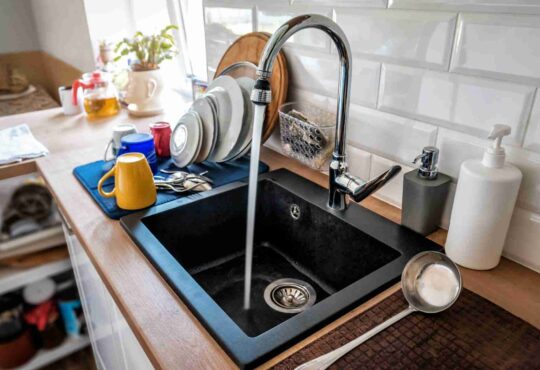
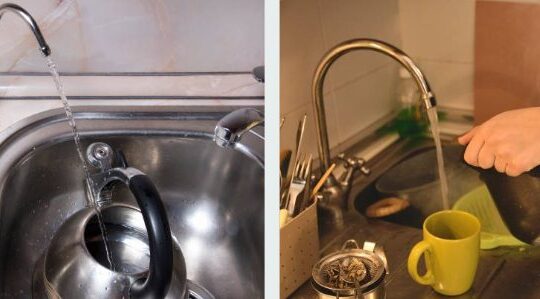
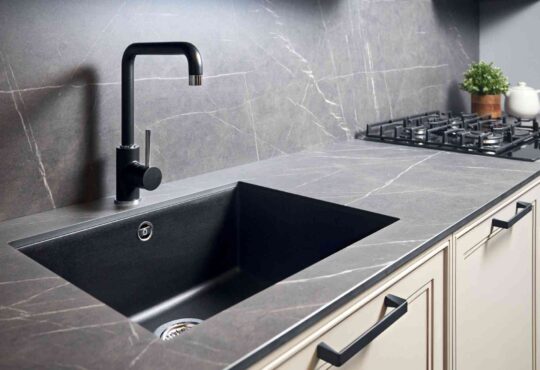
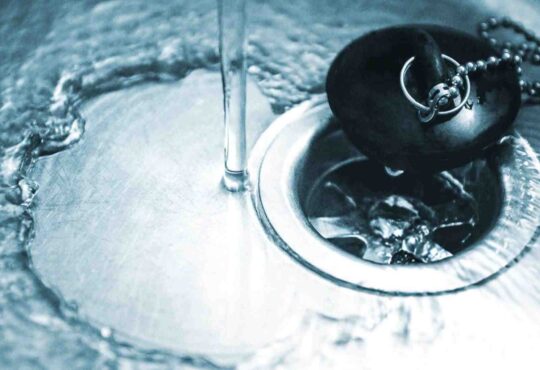
 Hi I'm Joe.
Hi I'm Joe. 